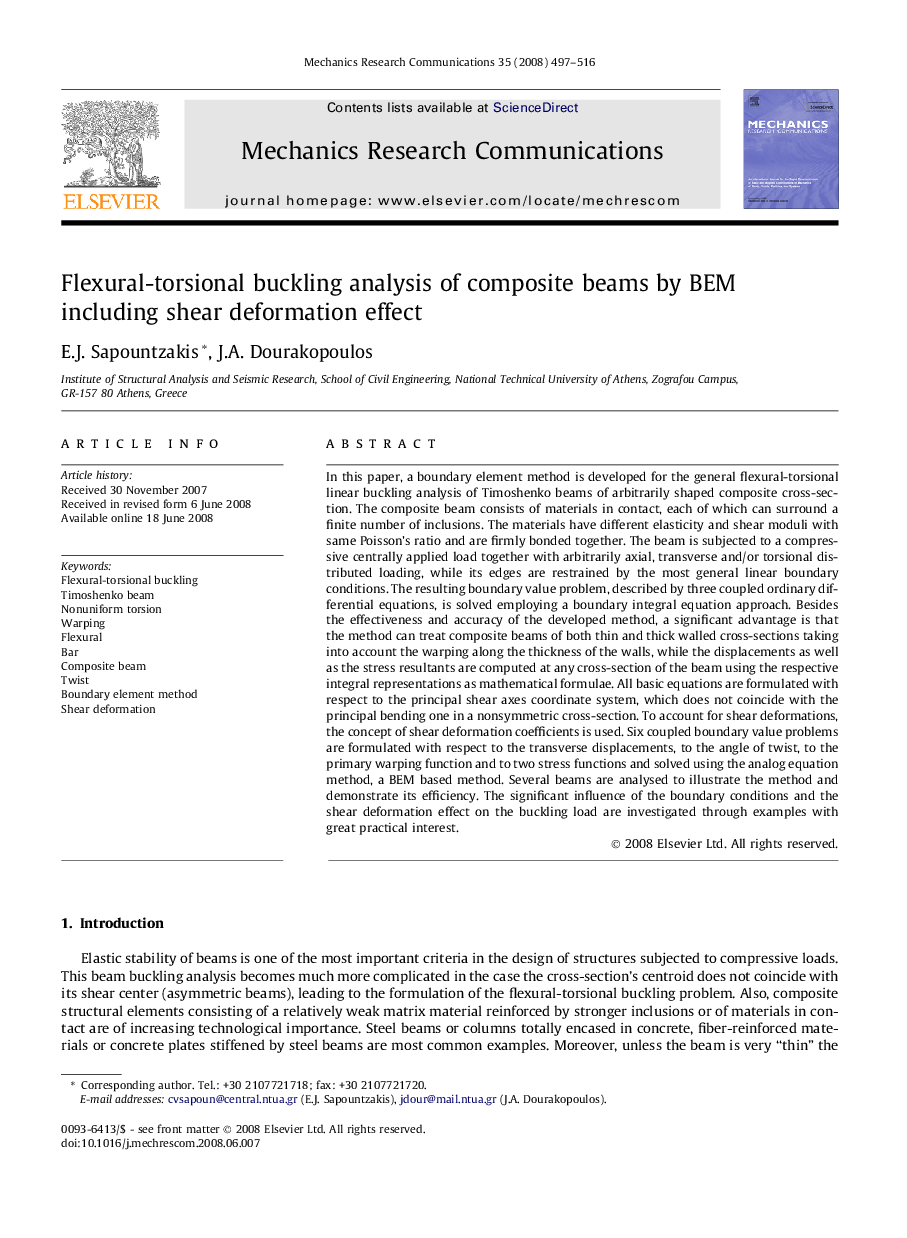| Article ID | Journal | Published Year | Pages | File Type |
|---|---|---|---|---|
| 801281 | Mechanics Research Communications | 2008 | 20 Pages |
In this paper, a boundary element method is developed for the general flexural-torsional linear buckling analysis of Timoshenko beams of arbitrarily shaped composite cross-section. The composite beam consists of materials in contact, each of which can surround a finite number of inclusions. The materials have different elasticity and shear moduli with same Poisson’s ratio and are firmly bonded together. The beam is subjected to a compressive centrally applied load together with arbitrarily axial, transverse and/or torsional distributed loading, while its edges are restrained by the most general linear boundary conditions. The resulting boundary value problem, described by three coupled ordinary differential equations, is solved employing a boundary integral equation approach. Besides the effectiveness and accuracy of the developed method, a significant advantage is that the method can treat composite beams of both thin and thick walled cross-sections taking into account the warping along the thickness of the walls, while the displacements as well as the stress resultants are computed at any cross-section of the beam using the respective integral representations as mathematical formulae. All basic equations are formulated with respect to the principal shear axes coordinate system, which does not coincide with the principal bending one in a nonsymmetric cross-section. To account for shear deformations, the concept of shear deformation coefficients is used. Six coupled boundary value problems are formulated with respect to the transverse displacements, to the angle of twist, to the primary warping function and to two stress functions and solved using the analog equation method, a BEM based method. Several beams are analysed to illustrate the method and demonstrate its efficiency. The significant influence of the boundary conditions and the shear deformation effect on the buckling load are investigated through examples with great practical interest.
